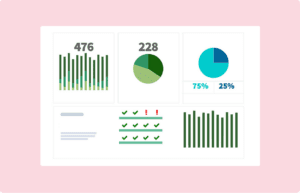** UPDATED 3/30/2020 **
The Emergency Family and Medical Leave Expansion Act (EFMLEA) provides expanded coverage under The Family and Medical Leave Act (FMLA) for situations related to coronavirus. The law becomes effective April 1, 2020, and will remain in place until December 31, 2020.
With the new law in place, everyone will have questions on who and what it covers and how to become eligible? We have listed the most questions and requirements below…
Who will be covered under this law?
There is a difference between EFMLEA and normal FMLA. Under this new provision, all employers with fewer than 500 employees must comply. The concentration of 50 or more employees within a 75-mile radius does not apply to EFMLEA.
The Secretary of Labor can issue regulations for good cause to exempt small businesses with fewer than 50 employees when compliance with the EFMLEA would jeopardize the viability of the business. Employees are eligible for relief under the EFMLEA after working for the employer for at least 30 calendar days.
Leave is available when an employee is unable to work or telework due to the need to care for a son or daughter under the age of 18 or when the child’s school or daycare is closed due to the coronavirus.
Is EFMLEA leave paid or unpaid?
The initial 10 days of EFMLEA leave is unpaid. After 10 days, the remainder of the leave is paid. The employee can elect to run his or her existing paid leave (like vacation days or PTO) concurrently with the 10-day unpaid leave period, but the employer cannot require this.
If an employee qualifies for both EFMLEA and Emergency Paid Sick Leave (see below), the employee may use the Emergency Paid Sick Leave at the same time as the first 10 days of EFMLEA leave that would normally be unpaid.
After the 10-day unpaid leave period expires, the employee will be paid two-thirds of his or her regular rate under the Fair Labor Standards Act, multiplied by the number of hours the employee would normally work. If this is unpredictable, the employer should look at the prior six-month period to determine the average number of hours worked per week prior to the leave.
Paid leave under the EFMLEA will be a maximum of $200 per day and $10,000 in total for the duration of the leave. After the $10,000 maximum is reached, the remainder of the leave, up to 12 weeks, is unpaid.
How should an employer notify employees of this new leave of absence?
The Department of Labor will publish a poster in the next several weeks that employers must post in the workplace. Employers should also issue a policy to employees notifying them of the availability of this leave.
Emergency Paid Sick Leave Act
This section of the Families First Coronavirus Response Act also becomes effective on April 1, 2020, and will remain in place until December 31, 2020.
Can an employee use Emergency Paid Sick Leave to cover the first 10 days of EFMLEA leave that is unpaid?
If an employee qualifies for both EFMLEA The Emergency Family and Medical Leave Expansion Act and Emergency Paid Sick Leave, the employee may use the Emergency Paid Sick Leave at the same time as the first 10 days of the EFMLEA leave that would normally be unpaid.
How does Emergency Paid Sick Leave work in conjunction with other paid time off already offered by the employer?
Employees are still entitled to take whatever paid leave was available to them before the passage of this Act, and employers cannot change their leave polices after the passage of this Act to provide less leave than has already been promised.
Employers cannot require that employees take leave under existing policies first. In fact, employees have the option to take Emergency Paid Sick Leave before any other leave provided by the employer if they prefer.
How much compensation will an employee be paid during Emergency Paid Leave?
Full-time employees are entitled to 80 hours of paid leave. Part-time employees are entitled to be paid for the number of hours per day they worked on average over the prior two-week period.
Leave taken for the following reasons will be paid at the employee’s regular rate of pay subject to a limit of $511 per day and $5,110 total:
- The employee is subject to a federal, state, or local quarantine or isolation order
- The employee has been advised by a health care provider to self-quarantine
- The employee is experiencing symptoms of coronavirus and is seeking a medical diagnosis
Leave taken for the following reasons will be paid at two-thirds of the employee’s regular rate of pay subject to a limit of $200 per day and $2,000 total:
- The employee is caring for a person who is subject to a federal, state, or local quarantine or isolation order or who has been advised by a health care provider to self-quarantine
- The employee is caring for a son or daughter of the employee whose school or daycare is closed
- The employee is experiencing any other substantially similar condition specified by the Secretary of Health and Human Services, the Secretary of the Treasury, and/or the Secretary of Labor.
What documentation is required to establish that the employee needs Emergency Paid Sick Leave?
Like the new provisions detailed in the EFMLEA, Paid Sick Leave legislation is silent on required documentation. Until more guidance is provided on this issue, employers should have the employee provide his or her own written statement about the reason for leave and for whom he or she is caring during the leave, if applicable.
After the first day of leave, the employer can require the employee to follow reasonable notice procedures to continue receiving paid sick time.
LATEST UPDATES on the Families First Coronavirus Response Act (FFCRA) – 3/30/2020
Since the bill was signed into law on March 18, new details about the guidelines and enforcement of the act. Here are a few of the most notable new tidbits:
- The Department of Labor (DOL) has released a mandatory employee rights poster for the FFCRA. It should be posted or distributed to employees electronically (via email or online portal) by April 1.
- The DOL will not bring enforcement actions against employers for violations of the FFCRA prior to April 17, 2020, provided that the employer has made reasonable, good faith efforts to comply with the Act
New Guidance from the DOL on Administering FFCRA Leaves
- Leaves are not available to employees with reduced hours, furloughed employees, or employees whose workplaces are closed.
- These leaves are not available to employees whose workplaces are closed due to a federal, state, or local shelter-in-place or stay-at-home orders, or due to business slowdowns.
- These leaves (and payroll tax credit) are not retroactive. Employees are not entitled to pay under these leaves if they were absent or out of work (for any reason) prior to April 1.
- Both emergency paid sick leave (EPSL) and emergency Family and Medical Leave (EFMLA) can be taken on an intermittent basis in certain situations.
- Employees may not be required to use other forms of paid leave prior to or concurrently with EPSL or EFMLA.
- Employers should keep documentation to show that employees who received leave were actually in need of leave. The documentation requirements will be outlined in soon-to-be-released IRS guidance.
________________________________________________________________________________________
As the world seeks to stop the spread of coronavirus (COVID-19), businesses like yours are working diligently to remain in operation, adapt their policies, and ensure the safety of their employees. Netchex is here to help you accomplish all of this and more.
Related articles

Benefits Administration

Improving Health Literacy Boosts Employee Benefits Experience & Well-Being

Workers’ Compensation: Essential Knowledge for HR Managers and Employers

